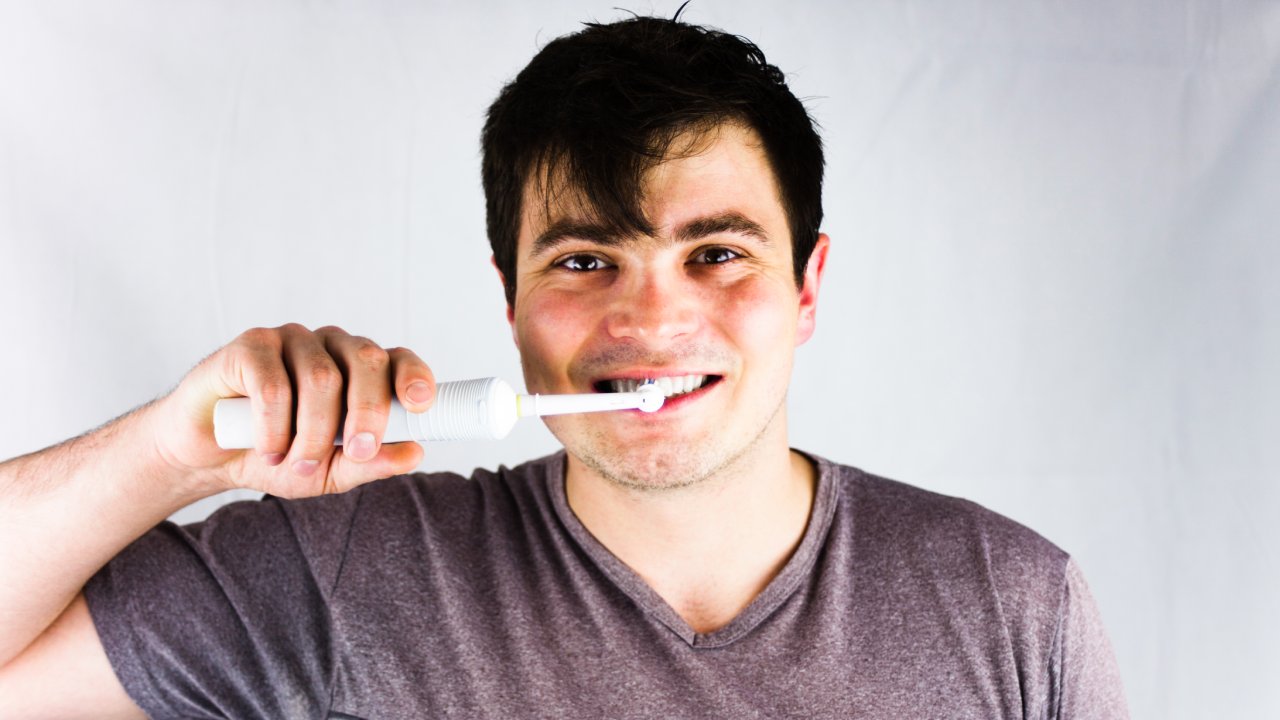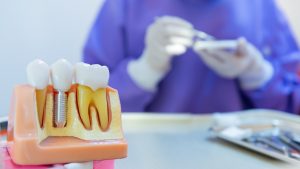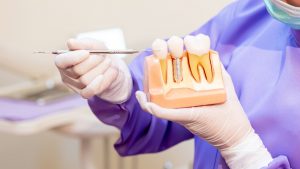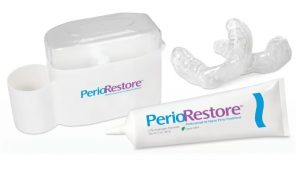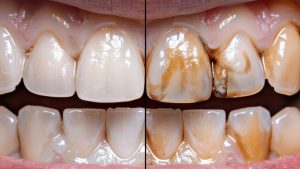Despite brushing and flossing regularly, many people still struggle with plaque buildup. This frustrating issue leaves us wondering, “Why isn’t my oral hygiene routine enough?” Plaque, a sticky film of bacteria, can form on teeth even when we follow the best practices for brushing and flossing.
In this article, we’ll explore the reasons why plaque persists, how various factors contribute to its formation, and what steps you can take to finally keep your teeth plaque-free. By understanding the reasons behind plaque buildup, you can take control of your oral health and improve your hygiene routine.
Understanding Plaque
Plaque is a sticky and colorless film of bacteria that constantly forms on your teeth. It develops when bacteria in the mouth combine with food particles, saliva, and acids. Over time, this film can harden and become more difficult to remove if not cleaned regularly, leading to oral health problems like cavities, gum disease, and bad breath.
How Plaque Forms and Its Role in Oral Health
Plaque forms when bacteria in the mouth feed on sugars and carbohydrates from food, producing acids in the process. These acids can attack tooth enamel, leading to tooth decay if not removed. Plaque also plays a key role in gum disease, as it can irritate the gums, causing inflammation, redness, and bleeding. This condition is known as gingivitis.
If plaque is not removed through regular brushing and flossing, it builds up on the teeth and along the gumline, creating a breeding ground for harmful bacteria that can damage teeth and gums. In some cases, untreated plaque buildup can even lead to tooth infection, requiring procedures like tooth extraction to prevent further damage.
Difference Between Plaque and Tartar
While plaque and tartar are closely related, they are not the same. Plaque is the soft and sticky buildup that forms on your teeth daily, which you can usually remove through brushing and flossing. Tartar, on the other hand, is the hardened form of plaque that has been left untreated.
When plaque is not removed, it hardens within 24 to 72 hours, turning into tartar. Tartar cannot be removed by brushing or flossing alone; it requires professional deep cleaning by a dentist. Tartar can also contribute to further plaque buildup and lead to more serious dental issues like gum disease and tooth loss.
Common Reasons Plaque Forms Despite Brushing and Flossing
Let’s go through the reasons that leads to the buildup of plaque even if you are doing brushing and flossing on a regular basis:
Inadequate Technique
One of the most common reasons plaque forms despite brushing and flossing is improper technique. Simply brushing for a few seconds and missing certain areas of your teeth can leave plaque behind. To ensure effective plaque removal, it’s important to:
- Brush for at least 2 minutes: Many people brush for less time than needed, leading to missed spots where plaque can accumulate.
- Use the correct brushing motion: Brushing with a back-and-forth motion or scrubbing too hard can cause damage to your gums and enamel. Instead, use gentle circular motions and ensure you’re brushing at the gumline.
- Proper flossing technique: Flossing is equally important for cleaning between your teeth. Using the wrong technique can miss hard-to-reach areas, allowing plaque to build up. Make sure to gently curve the floss around each tooth in a “C” shape, and slide it beneath the gumline to remove any plaque.
Frequency of Brushing
The frequency of brushing and flossing plays a significant role in plaque buildup. Ideally, you should brush your teeth after every meal, especially if you’ve consumed sugary or starchy foods that fuel bacterial growth. Here’s why:
- Brushing after every meal: Brushing immediately after eating helps remove food particles and sugars, reducing the chance for plaque to form. This also helps keep your breath fresh and protects your enamel.
- Brushing and flossing only once or twice a day: Brushing only in the morning and before bed may not be enough to control plaque buildup. Plaque can start forming quickly after meals, so brushing after each meal is crucial for maintaining oral health.
Diet and Food Choices
What you eat significantly impacts plaque formation. Certain foods contribute to the accumulation of plaque by providing the bacteria in your mouth with the fuel they need to thrive. Some common offenders include:
- Sugary foods: Sugary snacks and beverages feed the bacteria in your mouth, increasing acid production that leads to plaque formation.
- Sticky foods: Foods like candies, dried fruits, and even some granola bars can stick to your teeth, making it harder to remove plaque and food particles.
- Acidic foods: Citrus fruits, coffee, and soda can erode tooth enamel, making it easier for plaque to accumulate and harder for teeth to stay clean.
The longer these foods stay on your teeth, the more time bacteria have to produce plaque. Maintaining a balanced diet and avoiding sugary, sticky, or acidic foods can help reduce plaque buildup.
Health Conditions and Medications
Certain health conditions and medications can also contribute to plaque buildup, even if you maintain a proper oral hygiene routine:
- Dry mouth: Conditions like xerostomia (dry mouth) or certain medications can reduce saliva flow. Saliva helps wash away food particles and bacteria, so a lack of it can lead to plaque buildup.
- Diabetes: People with diabetes may experience higher levels of plaque buildup due to dry mouth and reduced immune function, making it harder to fight off bacterial growth in the mouth.
- Medications: Some medications, including antihistamines, antidepressants, and blood pressure medications, can cause dry mouth or alter the bacteria in your mouth, increasing the risk of plaque formation.
How Saliva Affects Plaque Formation
Saliva plays a critical role in oral health and has a direct impact on plaque formation. It acts as the mouth’s natural defense mechanism, helping to neutralize acids produced by bacteria and wash away food particles that could otherwise contribute to plaque buildup. When there is insufficient saliva flow, plaque can accumulate more easily, leading to the development of cavities and gum disease.
The minerals found in saliva, such as calcium and phosphate, also help to remineralize tooth enamel, repairing damage caused by acids. Without adequate saliva production, this natural protective mechanism is weakened, making your teeth more vulnerable to plaque and tartar buildup.
Saliva keeps the mouth moist, which is crucial for maintaining proper function of the gums and oral tissues. Adequate moisture helps prevent dry mouth, a condition that can lead to plaque buildup because there’s less natural washing action occurring.
Inadequate Tools or Products
The type of toothbrush you use plays a significant role in preventing plaque buildup. While both manual and electric toothbrushes can be effective, using the right one for your needs is key:
Soft bristles:
It’s essential to choose a toothbrush with soft bristles. Hard bristles can damage your gums and enamel, making it easier for plaque to accumulate. Soft bristles clean effectively while being gentle on your teeth and gums.
Electric vs. manual:
Electric toothbrushes can provide a more thorough cleaning than manual brushing due to their consistent motion and built-in timers. Studies show that electric toothbrushes can remove more plaque and reduce gingivitis more effectively than manual toothbrushes.
However, manual brushes can still be effective if used correctly with proper technique. The most important factor is brushing for the recommended two minutes, no matter which type of toothbrush you choose.
Importance of Fluoride Toothpaste in Reducing Plaque
Fluoride toothpaste often recommended by dentists is an essential tool in reducing plaque and protecting against tooth decay. Fluoride helps to:
- Remineralize enamel: Fluoride strengthens the enamel, making it more resistant to acid attacks from plaque and bacteria.
- Fight plaque-causing bacteria: Fluoride has antibacterial properties that help to reduce the growth of bacteria that contribute to plaque formation.
- Prevent cavities: Regular use of fluoride toothpaste helps prevent cavities by inhibiting the demineralization of tooth enamel, which is a key factor in plaque buildup.
How Mouthwashes and Additional Products Can Enhance Oral Hygiene

While brushing and flossing are the foundation of good oral hygiene, incorporating additional products can significantly enhance plaque control:
Mouthwashes:
Antiseptic mouthwashes help kill bacteria that cause plaque and gingivitis. Some mouthwashes contain fluoride, which further strengthens enamel and prevents plaque buildup. Using a mouthwash after brushing and flossing can offer added protection and freshen your breath.
Interproximal brushes:
These small and cone-shaped brushes are designed to clean between teeth, especially in spaces where traditional floss may not reach. They are especially useful for people with braces, dental work, or large gaps between their teeth. Interproximal brushes can remove food particles and plaque from hard-to-reach areas, preventing plaque accumulation.
Water flossers:
Water flossers (also known as oral irrigators) use a stream of pulsating water to remove food particles and plaque between teeth and along the gumline. They are a great addition to traditional flossing, especially for individuals with sensitive gums or braces. Water flossers are effective at cleaning areas that are often missed by traditional flossing, enhancing overall plaque removal.
Incorporating these additional tools into your daily oral hygiene routine can provide a more comprehensive defense against plaque buildup and improve your overall oral health.
Importance of Regular Dental Checkups
Regular dental checkups play a crucial role in maintaining oral health and preventing plaque buildup from turning into tartar. Despite consistent brushing and flossing, plaque can accumulate in areas that are difficult to reach. If left unchecked, this plaque can harden into tartar, which is resistant to removal through normal brushing.
Professional cleanings by a dentist are vital to remove this plaque and tartar before it leads to more severe oral issues. Deep cleanings ensure that plaque does not have the opportunity to harden and become a breeding ground for bacteria, thus preventing the progression of gum disease and tooth decay.
Dentists are also instrumental in identifying the early signs of plaque buildup. Through routine checkups, they can spot plaque and tartar in areas that are often missed during at-home cleaning. They are trained to detect the subtle early symptoms of gum disease, such as gum inflammation or gingivitis, which may not be immediately noticeable to the patient.
Identifying these issues early can help prevent more significant dental problems, such as tooth loss or advanced gum disease, and allow for timely intervention with professional cleaning and personalized advice on improving oral hygiene habits.
Conclusion
Taking a more thoughtful approach to your oral care routine can help prevent plaque buildup, even if brushing and flossing alone aren’t enough. By using the right tools, techniques, and giving extra attention to your routine, you can keep your teeth clean and your gums healthy. We hope this article has helped you understand the factors behind plaque formation and provided useful insights to improve your oral hygiene.

